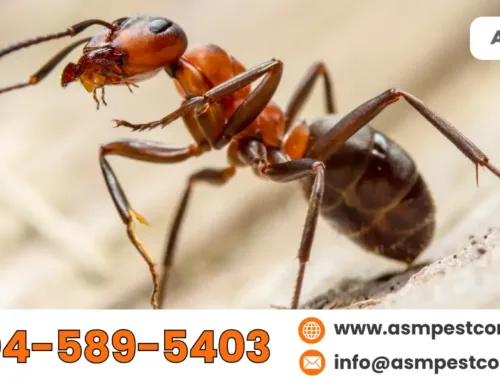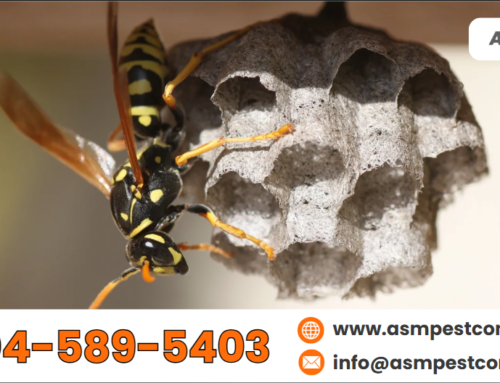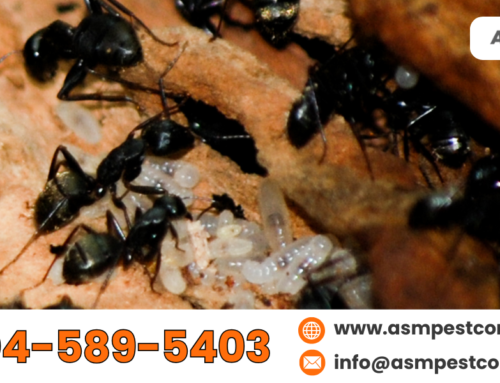Have you ever thought about what do bed bugs look like? Well, these pests might look tiny in size, but they have the power to ruin your peaceful night very easily. Imagine waking up one morning and finding severe itching spots on your hands! This is the sign that you have brought home unwelcoming guests: bed bugs. These tiny yet troublesome pests are hard to spot. But understanding what they look like and what makes them draw into your house can help you think of better elimination plans. Through this guide, we will have a detailed discussion on bugs, their appearance, major attractants, and smart prevention tips to avoid future outbreaks.
What Do Bed Bugs Look Like?
These tiny pests are reddish-brown with a body shape resembling an apple seed. Adults are in the body dimension of 4-5 millimeters in length, with oval, flat bodies. They have small antennae and six legs. Nymphs or newly hatched bugs are pale yellow and quite small to notice with the naked eye. Even though they are small in size, they are notorious for feeding on human blood and infesting homes. Their presence is very common during the night. Identifying their appearance is essential to performing effective bed bug control measures.
Understanding the Life Cycle and Development Stages
Having complete information about the development stages and life cycle is important for bed bug removal New Westminster. These pests undergo a simple metamorphosis that is based on three primary stages i.e., egg, nymph, and adult. For a better familiarity with these three stages, let’s dive into the discussion below:
Egg Stage
This stage starts when the bugs lay eggs. Female specimens lay white, tiny eggs that are around 1 millimeter in length. They resemble a small rice grain in size. Eggs are then deposited into hidden dark crevices, making them hard to detect. Within 10 days, the eggs hatch into nymphs.
Nymph Stage
Nymphs are also known as immature bed bugs. Before reaching adulthood, they pass through five development stages known as instars. During every instar, they shed the exoskeleton after feeding. This process is known as molting. At each stage, they start to grow even more, starting from 1.5 millimeters and growing to almost 4.5 millimeters. It can be challenging to notice them during the nymph stage due to their pale coloration and small size.
Adult Stage
The last stage is about adulthood! Adult bugs are around 5 to 7 millimeters long, resembling the shape of an apple seed. They have an oval-shaped, flattered body that gets more elongated after feeding. Plus, they have vestigial wings in reddish-brown color, making them capable of flying high. Adults are easy to identify due to their color and size.
Having in-depth knowledge about the life cycle and development stages it is easier for exterminators to perform quick bed bug control Vancouver.
Common Reasons That Drawn Them Into Your Property
Warmth and Carbon Dioxide
These pests are very attracted to carbon dioxide and warmth emitted by animals and humans. This eventually helps them to locate their hosts very easily, making human bodies their ideal food source. The heat from our skin also attracts them.
Blood Supply
They feed much on blood and humans as their preferred food source. Hence, these tiny pests are drawn to exposed skin when the human body is still during night hours. The availability of a blood supply in homes makes them a prime target for infestation.
Dark, Secluded Areas
For laying eggs, they always look for secluded and dark places. This helps them to stay protected against any harm. You can notice their presence within furniture cracks, mattresses, crevices, or cracks. Thus, their secretive nature makes it hard for experts to perform an efficient treatment of bed bug control Surrey.
Health and Structural Risks You Should Know About
For some people, bed bugs are just an inconvenience during sleeping hours. But the interesting fact is that it can cause huge structural and health risks if not controlled at the right time. Their bites often lead to allergic reactions, scratching infections, or skin allergies. In severe cases, they can also trigger sleep disturbances or anxiety. Structurally, they can infiltrate homes, damaging walls, bedding, or furniture as they hide in cracks. As soon as you notice their population, take quick action to control bed bug control Maple Ridge to prevent future outbreaks.
Preventing Infestations To Avoid Future Outbreaks
Preventing the infestation of any pest always starts with the understanding of what they look like. Having complete knowledge helps with early detection and prevention. These oval-shaped, flatbed bugs hide in furniture cracks, behind wallpapers, and in mattresses. To avoid them at home, it is important to adopt a multi-faceted approach. Always seal cracks or gaps around doors, windows, or baseboards with caulking. Vacuuming the home regularly is another important tip. Inspect the areas where the chance of bugs laying eggs is very common.
An important bed bug control strategy is to be cautious when returning home from trips, as bed bugs are notorious hitchhikers. Make it a habit to inspect your luggage and clothing thoroughly, and consider using protective covers on mattresses and box springs. These covers are designed to eliminate hiding spots for bed bugs, making it harder for them to settle in. Additionally, reducing clutter in your home limits the number of hiding spots available, which is a critical aspect of how to prevent bed bugs from entering home spaces.
FAQs
- What is the approximate size of bed bugs?
These pests are small in size, like an apple seed. Their size is roughly 4-5mm once they are fully grown. They might be small but are visible to the naked eye.
- In what color are they normally found?
They have a reddish-brown color. These pests get darker over time due to the blood they are feeding on during night hours.
- Do they have wings?
No, they are generally wingless. They use their fast-crawling power to move from one place to another, hiding in crevices and cracks.
- Where do bugs hide?
They typically hide in tight, dark spaces like bed frames, behind furniture, or mattress seams.
- How can I spot bed bugs at night?
They are nocturnal pests, and you can spot them with a flashlight. Inspect areas like seams, bedding, or cracks for dark spots.
Sleep Peacefully with Effective Bed Bug Control by ASM Pest Control
If you are worried about losing your sleep over bed bugs, don’t worry; ASM Pest Control has got you covered! We offer expert solutions to eliminate the bugs for good and give you complete peace of mind at night. The latest techniques are available from our professionals, who inspect the whole property to identify the nesting areas for quick elimination. Reliable, discreet, and fast service is available to protect businesses and homes from infestations. Trust our team, and let us help you kick these bugs out of your house right now.






